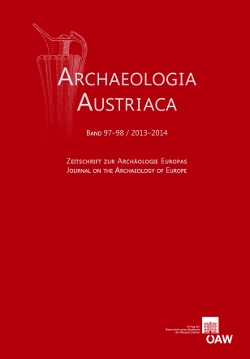
Archaeologia Austriaca 97-98/2013-2014, pp. 97-130, 2014/12/30
Zeitschrift zur Archäologie Europas
Journal on the Archaeology of Europe
In this contribution Mycenaean clay figurines are examined in the light of their Mediterranean, and especially their central Mediterranean distributions. In Italy a recent find from Fondo Paviani (Verona) adds to the small group of figurines already known from Lipari, Scoglio del Tonno and possibly Broglio di Trebisacce. Following the prevailing view which associates figurines with the palaces of the Argolis and their ideological discourse, the few examples from Italy may be used to confirm that exchange relationships between the Mycenaeans and the Italian communities were unofficial and unsystematic. The contexts of the figurines – mostly from sites to which Mycenaean pottery was exclusively or mainly imported - may however indirectly testify to a concrete function in trade activities. More generally, Mycenaean figurines may have conveyed an important meaning in sanctioning transactions at various levels – from the personal and private to the official and public – and in various activities, religious as well as purely mundane. As for long-distance exchange, an important link between figurines and trade agents is also indicated. Wherever Mycenaean pottery is mainly attested by local production, implying the transfer of people or technologies – as in Italy or Anatolia - figurines seem to be under-represented, whereas they are more numerous where pottery is clearly an outcome of trade, as in the Levant. Finally, a role in exchange activities is also suggested for the rough locallymade Italian figurines, which are mainly distributed along the Adriatic coast, at several sites engaged in industrial production and trade during the Italian Final Bronze Age, when Italian style seems to gain importance in the Aegean.
Keywords: Mycenaean figurines, Bronze Age Italy, long-distance exchange, social practices, economic exchange